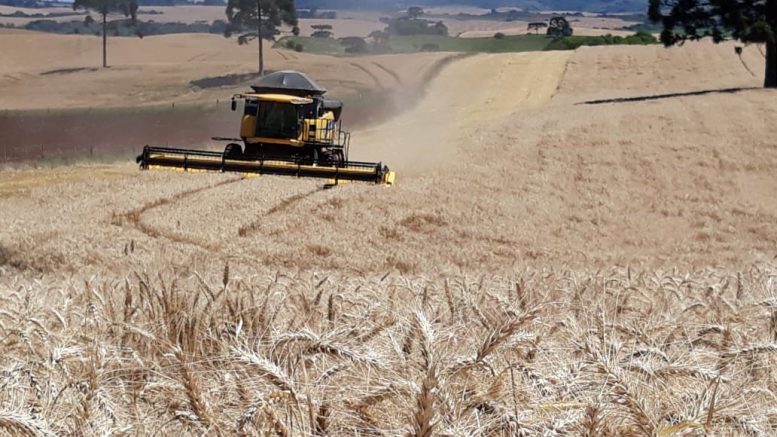“This authorization represents the possibility of evaluating cultivars with the HaHB4 gene, from sunflower, inserted in Brazilian wheat cultivars…”
Jorge Lemainski is the head of Embrapa Trigo, an agronomist from the University of Passo Fundo, M.Sc in agricultural sciences from the University of Brasília.
The National Technical Commission on Biosafety has approved the cultivation and sale of GMO drought-tolerant wheat in Brazil. Brazil is the second country in the world, after Argentina, to approve the cultivation of the GMO wheat.

Jorge Lemainski, head of Embrapa Trigo
AgriBrasilis – Is it safe to grow HB4 wheat in Brazil? What does authorizing the cultivation of this variety represent for Brazilian research?
Jorge Lemainski – Scientific evidence evaluated by the National Technical Commission on Biosafety – CTNBio indicates that the cultivation is safe.
This authorization represents the possibility of evaluating cultivars with the HaHB4 gene, from sunflower plants, inserted in Brazilian wheat cultivars, regarding the increase of tolerance to drought in different locations, in addition to the areas under controlled experimental conditions authorized to develop projects and activities with GMOs.
Embrapa plans to complete the process of introgression (transfer or permanent introduction of genes from one species to another) of the sunflower HaHB4 gene in specific BRS wheat cultivars, from Embrapa, via backcrossing and self-fertilization.
Embrapa plans to compare the yields of GMO wheat cultivars with control cultivars, without the HaHB4 gene, cultivated under drought conditions, in rainfed farming, in the tropical environment of Brazil.
AgriBrasilis – What is the participation of wheat in the harvest and off-season harvest? What is its performance in the Cerrado biome?
Jorge Lemainski – The official statistical data use the 1st, 2nd and 3rd harvest, not distinguishing between regular harvest and off-season harvest. However, it is estimated that in the Cerrado (Brazilian savannah) environment, 75% to 80% of wheat cultivation takes place in a rainfed system, while 20% to 25% takes place in an irrigated system.
As for performance, in the irrigated system, 9,630 kg/ha of the BRS 264 cultivar were obtained in the city of Cristalina, State of Goiás, in the 2021 harvest. In the rainfed system, 5,160 kg/ha of BRS 404 wheat were obtained in the city of Sacramento, State of Minas Gerais, in the 2019 harvest. Normally, under rainfed conditions, 2,500 kg/ha are expected, depending on management and agroclimatic conditions.
The wheat farming and production area has been expanding during the last four years in the South Region and in Central Brazil. In 2019, 2.1 million hectares were cultivated and 5.2 million tonnes were harvested; in 2022, 3.1 million hectares were cultivated and 9.7 million tonnes were harvested, according to Conab. The Southern Region contributes with 90% of the area and Central Brazil with 10%.
Wheat integrates the farming systems, normally in succession to soybean and corn, both in the South Region and in Central Brazil.
AgriBrasilis – When is Brazil expected to become self-sufficient in wheat? What are the opportunities for the agricultural sector?
Jorge Lemainski – We believe that Brazil will reach self-sufficiency within 5 years.
Brazilian wheat has achieved technological and industrial quality for baking, biscuits and pasta comparable to the best wheats in the world. Almost 90% of Brazilian production is intended for human consumption and 10% is intended for animal feed.
In 2022, Brazil allocated US$ 2.15 billion for wheat imports. Expanding Brazilian production can improve the trade balance, create jobs and local income, in addition to boosting the agribusiness economy and reducing fixed costs of properties.
In addition to human consumption, wheat has gained space to compose feed for the animal protein chain, grazing for dairy and beef cattle, production of preserved food – pre-dried, silage – and will be used to produce starchy ethanol generating DDGs (distiller’s dried grains with solubles) to compose animal feed.
Studies by Embrapa show that wheat can replace corn in the feed for pigs and poultry, with nutritional and economic equivalence.
Because of the volume of raw material demanded by feed mills, winter cereals could be complementary to corn in feed composition.
READ MORE:

